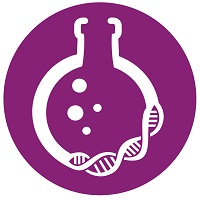Bioanalytics
Symposium: Changing Landscape of Regulated Bioanalysis
Immunogenicity Assessment: Can We Harmonize Immunogenicity Assays?
Monday, November 10, 2025
10:30 AM - 11:00 AM CT
Location: 221 AB

Gregor Jordan, M.Eng.
Senior Principal Scientist
Roche Diagnostics GmbH
Penzberg, Germany
Speaker(s)
Immunogenicity testing is a critical component of therapeutic protein development and is mandated by regulatory agencies such as the EMA and FDA. Substantial efforts have been made over the past decades to develop robust assays for the detection of anti-drug antibodies (ADA) in patient samples, with a primary focus on improving assay sensitivity and drug tolerance. To standardize ADA detection, a statistically driven approach has been adopted to define assay cut-points, enabling consistent classification of ADA-positive samples. This methodology is now well-established and widely accepted within the bioanalytical community.
With increased understanding of assay behavior and the emergence of in-silico assay simulations, it is now possible to gain deeper insights into ADA detectability and the influence of residual drug on assay performance. These advancements pave the way toward a more quantitative and mechanistic interpretation of assay outcomes, including the potential for signal-to-background (S/B) or numeric result reporting.
This presentation will explore the use of in-silico immunogenicity assays and highlight the role and nature of circulating immune complexes in biological samples. Experimental data will be presented to demonstrate how immune complex size influences clearance rates, ultimately affecting ADA detectability and interpretation. By bridging assay outcomes with the biological manifestation of ADA responses, this work contributes to a more comprehensive understanding of immunogenicity detection and its clinical implications.
With increased understanding of assay behavior and the emergence of in-silico assay simulations, it is now possible to gain deeper insights into ADA detectability and the influence of residual drug on assay performance. These advancements pave the way toward a more quantitative and mechanistic interpretation of assay outcomes, including the potential for signal-to-background (S/B) or numeric result reporting.
This presentation will explore the use of in-silico immunogenicity assays and highlight the role and nature of circulating immune complexes in biological samples. Experimental data will be presented to demonstrate how immune complex size influences clearance rates, ultimately affecting ADA detectability and interpretation. By bridging assay outcomes with the biological manifestation of ADA responses, this work contributes to a more comprehensive understanding of immunogenicity detection and its clinical implications.
Learning Objectives:
- ... understand the impact of the rate contsants and affinities (KD) on the detectability of ADA in an assay. Which assay parameter should be changed to normalize KD differences.
- ... undestand how e.g. sample dilution impact the ADA detectability and how an assay should be optimized to support the S/B reporting strategy.
- ...that certain morphology of CIC are cleared rapidly and may therefore evade detection in ADA assays. To gain more insight, adjustments to the timing of sample collection may be necessary.
- ... how to optimize assay conditions to reduce potential residual drug interfernce.

